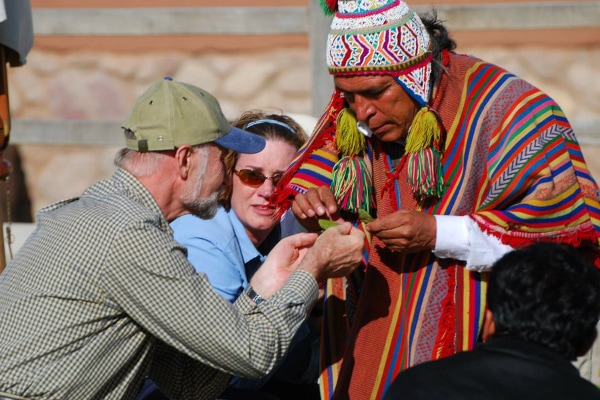Christmas and New Year’s Eve can have you counting down the days to being able to cozy up on the sofa in your thick knitted sweatshirt with a cup of eggnog or wrapping up warm to watch the city fireworks but…why settle for the norm when you can do something unforgettable…something spectacular? After all wouldn’t you prefer to be lightly dusting the golden sands of Rio de Janeiro’s beaches off your feet or, feeling the heat of summer instead of having to plan for another rainy day or snowed in weekend? Enjoy the festive warmth of South America with these incredible destinations that make up just some of the best places in South America to spend this Christmas and New Year’s Eve.
Check out our Local Travel Guides across Latin America, to Rio de Janeiro or Brazil, where you can find endless insider travel tips on places like Salvador de Bahia, Iguazu Falls, the Amazon, Buzios, Paraty, & Ilha Grande.

This year have a Christmas & New Year’s Eve like no other in South America / Source
Rio de Janeiro: The World’s Largest New Year’s Eve Party
If you’re searching for somewhere to spend New Year’s Eve in South America, there’s only one place to do so…Rio de Janeiro! Rio’s ‘Reveillon’ (New Year’s Eve) is regarded as the largest New Year’s Eve party in the world and at the stroke of midnight the eyes of the world are fixated on the beaches of Copacabana to listen to world famous musicians, samba music and to watch one of the biggest firework displays on the planet. Read more about celebrating New Year’s Eve in Rio de Janeiro…

Be part of the world’s biggest New Year’s Eve celebration in Rio de Janeiro / Source
Christmas in Peru: Gourmet food & Inca wonders
With the first recorded Christmas celebrations in Peru taking place in 1535, the country has a long and illustrious history of celebrating Christmas. Spend Christmas in the capital city of Lima known as, the City of Kings, where at about 10PM on Christmas Eve, the churches around Lima hold a mass called ‘Misa de Gallo’ before the night sky is filled with a shower of fireworks. Read more about the best places to spend Christmas in Peru…
Check out our Local Travel Guides across Latin America, where you can find endless insider travel tips on places like Machu Picchu, or elsewhere in Peru through Cusco & Sacred Valley, Lake Titicaca, Amazon Rainforest, Lima, the Nazca Lines, Ica & Paracas, or the White City of Arequipa & Condors of Colca Canyon.

Soak up the beauty of Lima this Christmas / Source
Buenos Aires: Summertime Christmas Experience
With average temperatures reaching 80.6°F during the Holiday Season in Buenos Aires you’ll be sure to see Santa Claus in more casual attire such as red sandals, shorts and t-shirt. Spending Christmas with the warm sun beating down on you while having a refreshing ice-cream at one of the many ice-cream parlors will soon seem like second-nature. Read more about spending Christmas in Buenos Aires…
Check out our Local Travel Guides across Latin America, to Buenos Aires or elsewhere in Argentina, find endless insider travel tips on places like Ushuaia & Tierra del Fuego, Iguazu Falls, El Calafate, Peninsula Valdez, Wine Valleys of Mendoza, Bariloche & Victoria Island, & Salta & Cafayate.
Admire Buenos Aires’ night sky as it gets lit up with fireworks on Christmas Eve / Source
Thanks for visiting our Central & South America Travel Blog! Feel free to follow us on Facebook, Twitter and Instagram or contact one of our Travel Specialists via email, phone or chat to plan your perfect Christmas & New Year’s trip to South America.







































